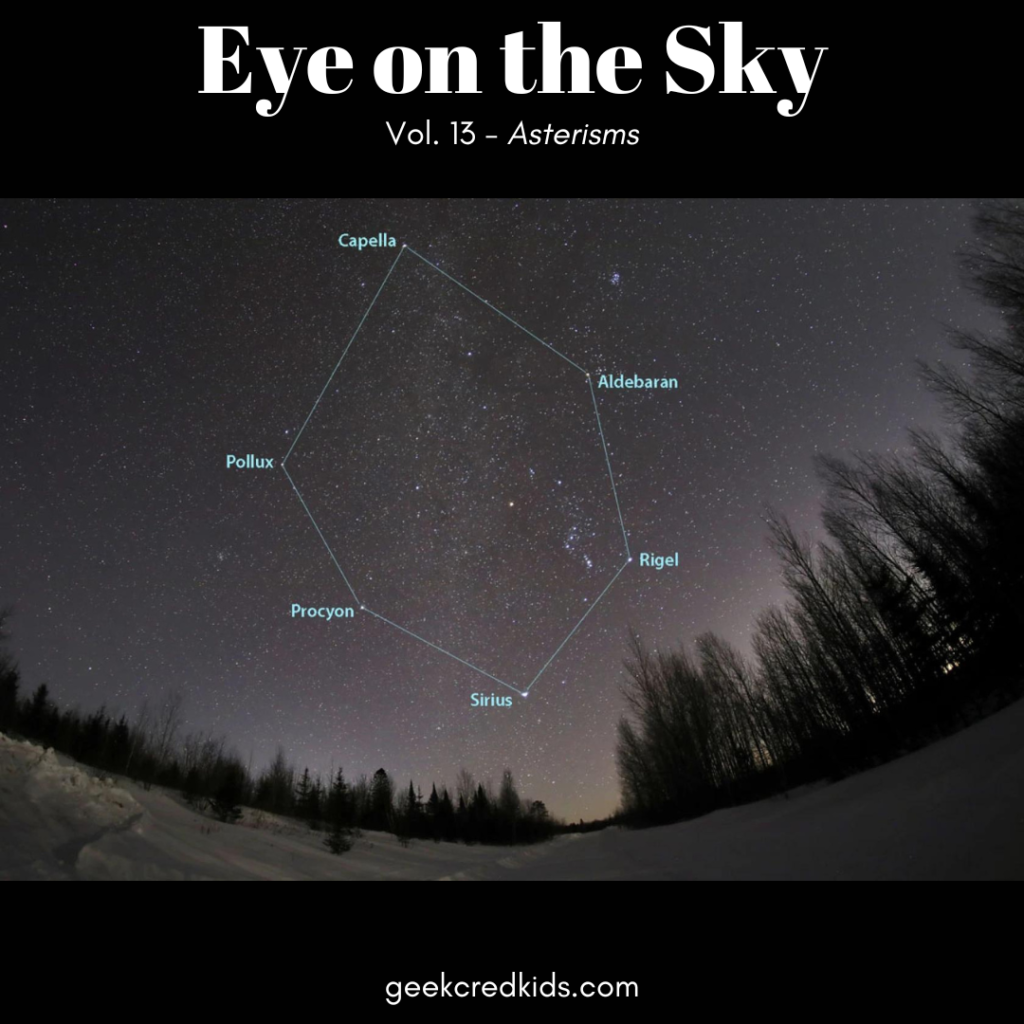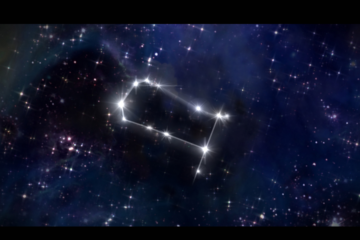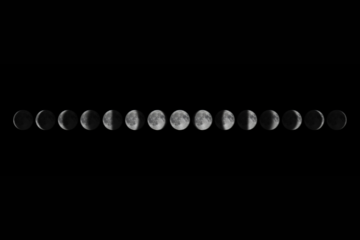Eye on the Sky Vol. 13 – Saturday, December 2, 2023

Asterisms are small groups of stars that create recognizable shapes but are not officially recognized as constellations. One of the most famous asterisms is the Big Dipper, a group of seven bright stars that form a ladle-like shape in the constellation Ursa Major, or the Great Bear. Another familiar asterism is the Summer Triangle, made up of three bright stars from different constellations – Vega, Deneb, and Altair. This month, we’ll be seeing the Winter Hexagon, made up of these stars:
Sirius in Canis Major: Often referred to as the “Dog Star,” Sirius is the brightest star in the night sky.
Procyon in Canis Minor: A bright star and the principal star in the Canis Minor constellation.
Pollux in Gemini: One of the twin stars in the Gemini constellation.
Capella in Auriga: The brightest star in Auriga, a constellation associated with a charioteer.
Aldebaran in Taurus: A giant red star that marks the eye of the bull in the Taurus constellation.
Rigel in Orion: One of the prominent stars in Orion, the Hunter, often associated with his foot.
Connecting these stars forms a roughly circular or hexagonal shape in the winter sky in the Northern Hemisphere. The pattern serves as a convenient guide for locating some of the brightest stars and constellations, making it a popular reference for amateur astronomers and stargazers.
Constellations are larger patterns of stars that have been officially named and recognized by astronomers throughout history. There are 88 constellations in the night sky, each with its own unique story and mythology. For example, Orion the Hunter is recognized by three bright stars in a row, forming “Orion’s Belt,” (another asterism.) But we’ll talk more about them another time.
Learning to identify constellations and asterisms can be like finding familiar shapes in the clouds. Some people see animals, mythical creatures, or everyday objects. To get started, pick a clear night, grab a star map or a stargazing app, and head outside to look for the patterns and stories that the stars tell you. Soon, you’ll be navigating the night sky like an ancient astronomer, discovering the wonders of the cosmos right above your head. We think listening to “Counting Stars” by One Republic just might give you an edge. ✨



0 Comments